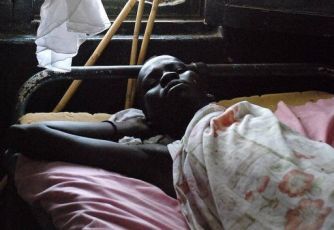Kala-azar in south Sudan 6 times higher than previous years: WHO
By Thon Philip
October 11, 2010 (BOR) – Cases of Visceral Leishmaniasis, also known as Kala-azar, have multiplied six times in southern Sudan over the last one year, according to the World Health Organization.

The incidence of cases is more than six-times higher than the same period in starting in 2007, when 758 cases were recorded, or 2008 when there were 582 known cases the WHO statement said.
People in southern Sudan who catch the disease have a 4.7% chance of dying. Children under 15 account for 75% of the deaths. Of the patients 70% are children many of whom already suffer from malnutrition and other secondary illnesses.
“Kala-azar is transmitted by the bite of sand flies and has a high mortality rate (over 95%) if not treated on time. The most common symptoms include fever, weight loss, enlargement of the spleen, anemia, diarrhea and fatigue. Treatment involves daily injections of sodium stibogluconate for one month and requires patients to stay near health facilities for observation. The disease suppresses the immune system, leaving victims vulnerable to other infections such as malaria or pneumonia,” WHO said
The disease, according to experts, is rampant between October and April in southern Sudan when sand flies are breeding.
A combination of weak health services and inaccessibility of Kala-azar affected areas in Southern Sudan due to insecurity and poor road networks are major obstacles.
“Insecurity, flooding and the lack of health facilities across a vast geographical area are…playing a part in limiting access to treatment for this deadly disease,” said Dr Mounir Christo Lado, Director for Endemic Tropical Diseases Control, Ministry of Health, in the statement.
WHO is hopeful to address the killer disease using what it describes as ‘an integrated approach in early diagnosis and improved treatment, active disease surveillance and case finding…and community mobilization to educate the public.’
“The increased number of cases in Old Fangak, Ayod and surrounding areas is very disturbing and it is becoming difficult to contain the outbreak,” says Dr. Abdi Aden, head of the World Health Organization’s office for Southern Sudan adding “Before the situation becomes uncontrollable, we must do something about it.”
Authorities in Jonglei state say the situation is “worse” in Fangak county than in other places.
Speaking to Sudan tribune on Monday, Rodenta Ayen, Jonglei state minister of health indicated that Sudanese Red Crescent Society (SRCS) that arrived in Bor this week will travel first to Fangak once a UNMIS (United Nations Mission in Sudan) flight is secured.
“These health workers are delayed by lack of transport,” she said. “But once the UNMIS approved their flight, they will travel immediately.”
Ayod county commissioner Thoi Chany said the death tolls in Ayod Primary Health Center as reached 70 people and more than 500 hospitalized when patients from Pagil are included.
(ST)

Anyang
Kala-azar in south Sudan 6 times higher than previous years: WHO
I personally advised our respective counties of greater Jongkulei to resorts to their own traditional ways of dealing with the disease,since the government has fail to lived upto their promises in many areas.